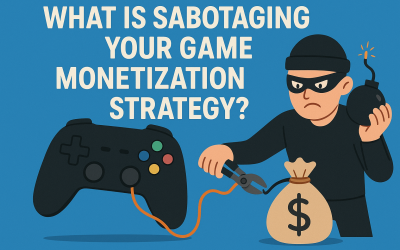Game Monetization – Then & Now
The history of game monetization dates back to the early days of arcade games, when players would insert coins or tokens into machines to play a game. As video games evolved and became more complex, so did the methods of monetization.
In the 1970s and 1980s, home consoles such as the Atari and the Nintendo Entertainment System allowed players to purchase and play games on their television sets. Games were sold on cartridges, and players had to buy a new cartridge to play a new game.
With the advent of personal computers in the 1980s, games were distributed on floppy disks and later CDs. Games were sold as standalone products and players had to purchase them upfront. Shareware, a distribution model where players could try a game for free before purchasing, became popular.
The rise of the internet in the 1990s brought about the first online multiplayer games, such as Ultima Online and Everquest. These games used a subscription-based model, where players paid a monthly fee to access the game’s servers and play with others.
As the gaming industry continued to grow, developers began experimenting with new monetization models. In-game advertising, where players are shown ads within a game, became popular. Additionally, free-to-play games, which are free to download and play but offer in-app purchases, became increasingly popular. This monetization model has been particularly successful in the mobile gaming market.
The advent of digital distribution platforms, such as Steam and the App Store, has made it easier for game developers to distribute their games and monetize them through various methods. In addition to traditional methods such as one-time purchases and subscriptions, new monetization models such as microtransactions, loot boxes and rewarded video ads have become popular in recent years.
Focusing more on Rewarded Video Ads -, Rewarded video ads have become a popular monetization strategy for mobile games in recent years. The basic concept is that players can watch a short video advertisement in exchange for in-game currency or other rewards. This type of advertising is beneficial for both the game developer and the advertiser.
The evolution of rewarded video ad monetization for games began with simple implementations, where players were offered a small amount of in-game currency in exchange for watching an ad. As the industry matured, game developers began to experiment with different types of rewards, such as extra lives, power-ups, and exclusive content.
One of the key trends in recent years has been the integration of rewarded video ads into the game design itself. Instead of being a separate feature, rewarded video ads are now often integrated into the gameplay, allowing players to earn rewards through normal play. This has led to a more seamless experience for players and higher engagement rates for advertisers.
Another trend has been the use of rewarded video ads for user acquisition. Game developers have begun using rewarded video ads to incentivize players to download and install their games. This has proven to be an effective strategy for acquiring new users, especially for games that have a high lifetime value.
In summary, rewarded video ads have become a popular monetization strategy for mobile games, with developers experimenting with different types of rewards and integrating ads into the gameplay itself. The use of rewarded video ads for user acquisition is also increasing.



